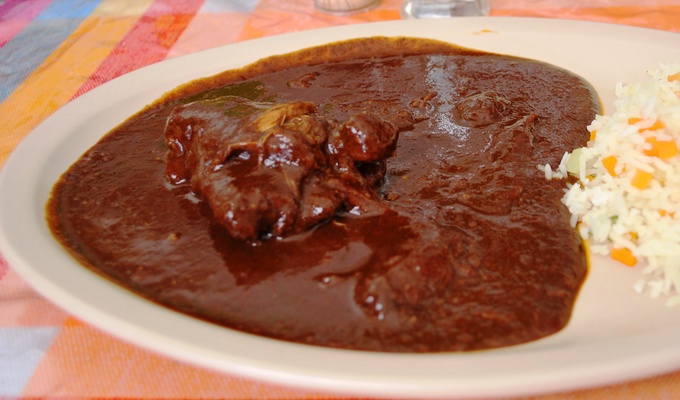Mole negro is one of the most iconic and complex moles of Oaxacan cuisine, distinguished by its dark color and rich, layered flavor. Its preparation typically involves a combination of dried chiles, such as chile ancho, chile mulato, and chile pasilla, alongside toasted nuts, seeds, and spices, with the addition of chocolate contributing to its deep hue and slight sweetness. The sauce is traditionally served over meats such as turkey or chicken and is often accompanied by rice.
Mole negro's origins are rooted in pre-Columbian cooking, where indigenous ingredients and techniques, such as the use of nixtamalized maize and chile, were later enriched by Spanish colonial influences, including cinnamon, almonds, and other Old World ingredients. The labor-intensive process involves roasting, grinding, and simmering the components to create a thick, velvety sauce. Mole negro holds cultural significance in Oaxaca, where it is a centerpiece at festivals, religious celebrations, and family gatherings, symbolizing the region’s culinary heritage and the blend of indigenous and European traditions. It is considered one of the Seven Moles of Oaxaca.
